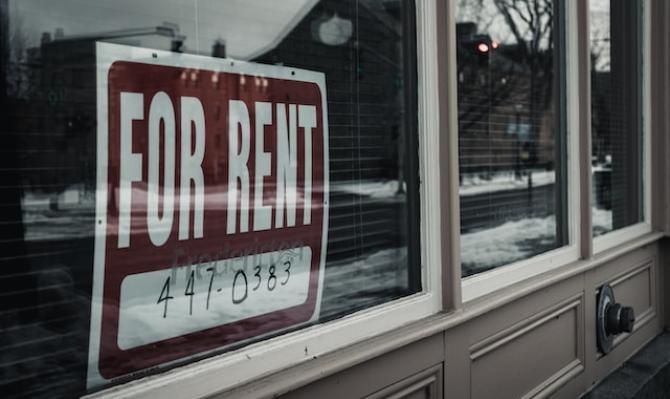
The importance of rents in US inflation
How does shelter, or the price of rent, impact US inflation? What is the outlook for this component and how does it affect the Fed’s monetary policy?
Inflation is on the decline in most advanced economies, although the core indices are falling at a slower rate. The pace at which they converge to the 2% target will be key in determining the future course of the major central banks’ monetary policy. In the case of the US and the Federal Reserve, one important factor will be the component related to housing costs (shelter), which accounts for 34% of the CPI consumption basket (43% if we exclude food and energy).
What does shelter include and how has it evolved since the pandemic?
In the case of the US CPI, the shelter component includes housing expenses. It consists of four subcomponents: rent of primary residence, attributed rents for homeowners, non-primary-residence accommodation and certain types of insurance, which make up 22%, 75%, 3% and 1% of the total component, respectively. The bulk of the shelter component is, therefore, rents, including both those paid by tenants and those attributed to homeowners. Both price changes are obtained through the tenant survey, specifically from the answers they provide about how much rent they pay.1 Thus, shelter mostly reflects the dynamics of the rental market which in recent years has been quite stressed. As can be seen in the first chart, shelter inflation began to rise rapidly during the second half of 2021 and peaked between late 2022 and early 2023. Since March, however, this rally has moderated, although the year-on-year growth remains well above of the Federal Reserve’s target.
- 1Buying a home is considered an investment rather than a form of consumption, so the purchase price does not figure in the CPI. However, households residing in a property which they own still have a level of consumption that is equivalent to that of households residing in a rented home. For this reason, for a primary residence under ownership, a cost is apportioned equivalent to what the owner would pay if they lived in their home but rented it.

Going forward, we can expect a further slowdown in rental prices
For several months we have been stating that the early indicators in the rental market suggest that this moderation in the shelter component ought to continue and could even be accentuated over the coming months. Moreover, given the significant weight of this component in the CPI basket, this is expected to drive down inflation as a whole. The indicators we refer to are indices such as that produced by Zillow, which shows the evolution of the prices of new rentals (i.e. how the rental price of the same home varies with a change of tenants). The Zillow Rent Index is indicative of the direction that the shelter component will follow in the CPI. That said, its synchrony is imperfect, since the Bureau of Labor Statistics (BLS, the agency in charge of collecting and publishing CPI data) calculates the variation in rental prices based on a sample of rentals which also includes the rental prices of tenants who continue to live in the same property. In fact, lease contracts with new tenants account for just 13% to 25% of the total CPI rental sample, according to a study by the Federal Reserve Bank of Cleveland.2 Thus, the rent component of the CPI tends to move in the same direction as the Zillow index, but more slowly and with a time lag.
- 2See B. Adams et al. (2022). «Disentangling Rent Index Differences: Data, Methods, and Scope». Working Paper nº 22-38. Federal Reserve Bank of Cleveland.

To try to better understand the BLS’s sample and minimise the discrepancy with the early indicators produced by private entities, this study by the Cleveland Fed has used micro-data within the BLS sample to separate rental contracts where there has been no change of tenant and those where there has. As can be seen in the third chart, the Cleveland Fed index for new tenants shows a close correlation with the Zillow index.

This means that, looking ahead to the next few months, the moderation observed in the Zillow index should translate to the evolution of CPI rents, with some degree of time lag. In particular, based on the historical correlations between a 12-month lag of the Zillow index and the shelter component, we can expect this component to stand at around 4.5% by the end of the year and slightly above 3% by mid-2024. Thus, solely as a result of the direct effect of the year-on-year drop in the Zillow index, headline inflation in the US could decrease by 1.0 pp by the year end and by 1.5 pps by mid-next year. In addition, there are some signs of easing of tensions in the US rental market. For instance, the percentage of homes available for rent compared to the total number of homes being rented in Q1 2023 was above the 2021 and 2022 averages, although it is still below the average since 1965 (see fourth chart).

That said, the situation is not homogeneous across US cities or regions. Differences in rental prices are substantial and, as can be seen in the last chart, so is their year-on-year rate of change. While rents have gone down in some cities (e.g. Las Vegas), in others (e.g. Boston) the year-on-year increases in the price of new rentals according to Zillow are substantial (+7%).

However, as shelter inflation continues to fall, given its significant relative weight in the consumer basket, headline and core inflation as a whole will also continue to come down. Moreover, with disinflation also visible
in many other components of the consumer basket, the Federal Reserve has reason to bring its cycle of interest rate hikes to an end soon. Nevertheless, the rate at which inflation will return to 2% is uncertain and, in the absence of an economic downturn, the Federal Reserve will likely be inclined to maintain the environment of high interest rates for several quarters to come.



